Last week at Clerkenwell Design Week (back in real life for the first time in two years) I was delighted to chair a panel discussion on designing sustainably for the home. And yes it was just before I succumbed to the dreaded C (I kept a distance from most people and none of the panel have it so far). For those of you who have sent me lovely get well and rest messages I was sent a transcript of the talk so this has been mostly and editing job and yesterday’s post was written ahead of time so you may read this while I lie in bed ….
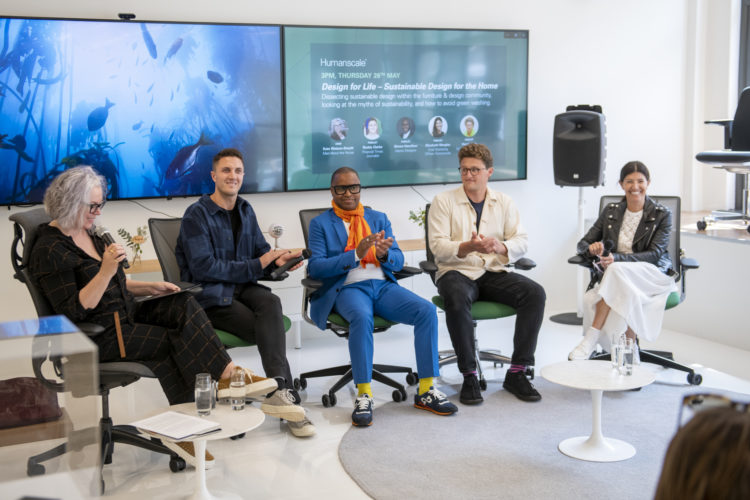
So, on to the panel. It was held at Humanscale, a company making innovative office furniture that has only ever worked sustainably, from making office chairs out of ocean waste to offering a full repair service so that nothing needs to be thrown away. Indeed, it is the first company to have 25 of its products certified as climate, energy and water positive – that’s about 60 per cent of their sales.
This certification is provided by the LCP (Living Product Challenge) and means that the manufacturing process of each of these 25 products, which are audited across 20 categories (climate, waste, water etc) must give back measurably more than it takes. For example; 100 per cent of the company’s manufacturing water comes from onsite captured rainwater and 15 of the 25 certified products obtain 105 per cent of their energy in production from renewable energy produced on site on a net annual basis.
Sitting with me was a great group of experts who you might like to follow on their own channels; Roddy Clarke, is a journalist and design writer (the FT and Forbes) who is passionate about restoration and craftsmanship and works hard to spread the word about the importance of the circular economy and encouraging brands to be transparent in all that they do.
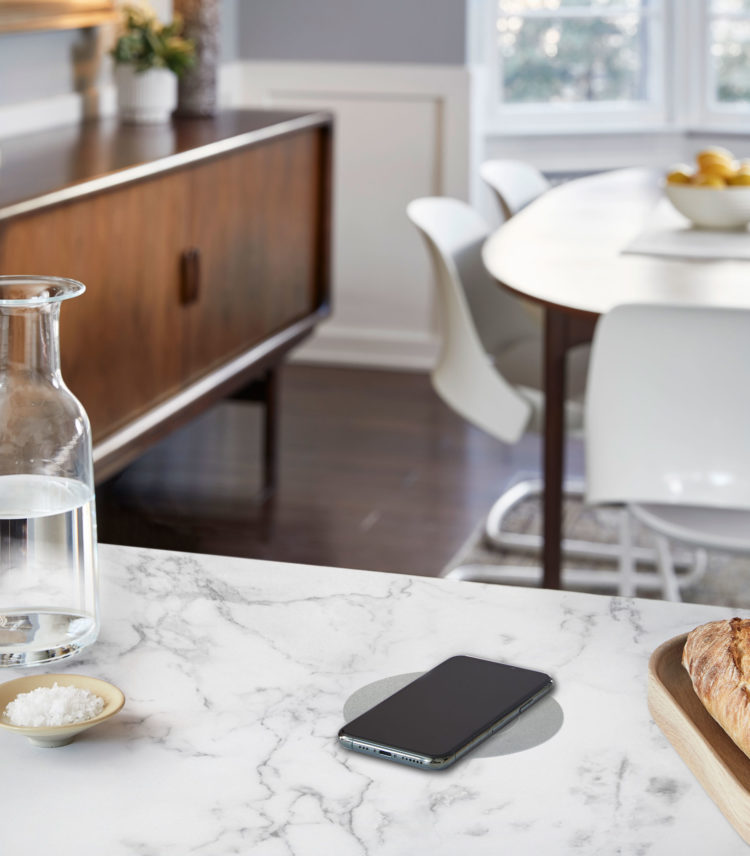
Simon Hamilton, is an interior designer in both the residential and commercial sector as well as being a lecturer and careers mentor. He consults and campaigns on diversity and inclusion across the industry working with United in Design and The British Institute of Interior Design (BIID).
Harry Peck is a recent 3D design graduate (and definitely one to watch) whose recent work Wave Cycle is a range of sustainable plastic furniture made from recycled surf and body boards. It is estimated that every year some 16,000 cheap polystyrene bodyboards are left behind on British beaches after a single use.
Elizabeth Margles, is the chief marketing officer for Humanscale with more than 20 years experience in design, fashion and retail.
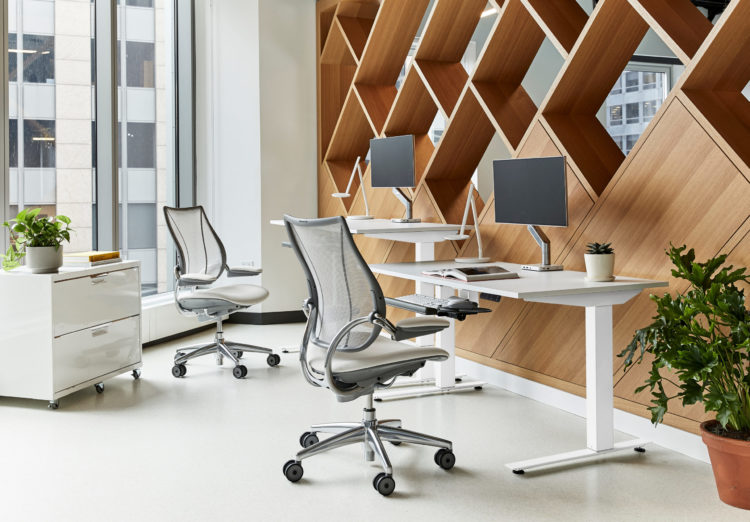
The key point I wanted to make from this panel is to encourage a sense of positivity. That we should come away feeling that we can all take small steps to make a difference and not that we should all end up feeling that it’s hopeless and all doom and gloom. And by and large I think we achieved that.
We started, as we needed to, with the issue of Greenwashing, which is so prevalent. Regular readers will know that when I wrote about paint a couple of weeks ago, I mentioned how many brands are claiming to be eco-friendly – trumpeting about their low use of VOCs for example, when that is simply following the law. This, says Roddy, is a common and blatant example of greenwashing. He urged brands to be transparent about what they are doing and not try to shout about something they are doing just to be seen to be green. This is a one-way trip to losing trust among your customer base he warned.
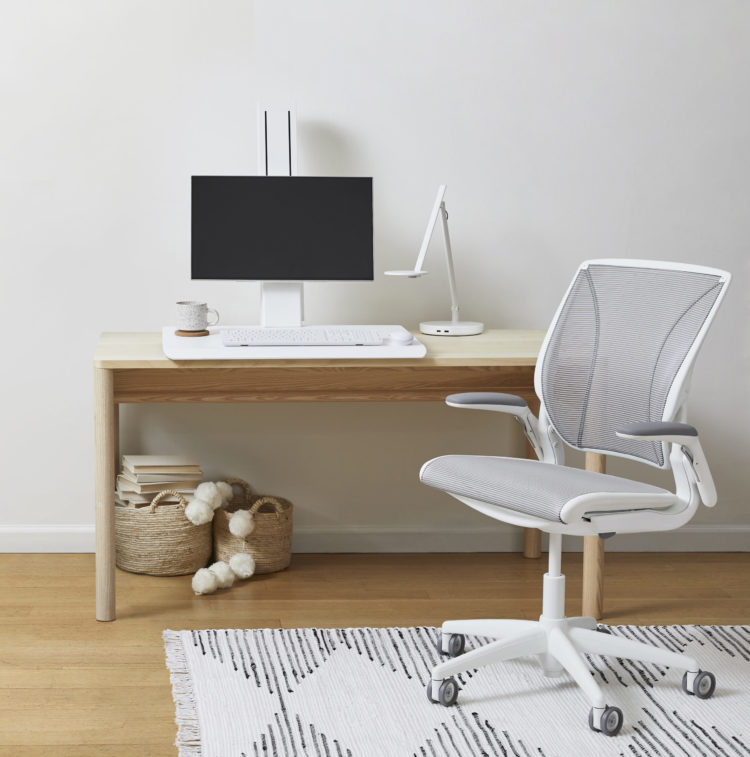
Much as with my Do Less Harm directory, we all know that it’s impossible to get right all the time, but by being honest about what you are doing (as a brand) and what you hope to do in the future we can foster a sense of community and a sense that we all working together to the same goals.
As Simon pointed out he is often pushed by his clients to go further with each project so he is learning and improving all the time. And it is only by working together – customers pushing brands and brands hearing from their clients that the change will happen. That said, Harry pointed out that, there is still a way to go – at the recent Grand Designs Show he noted some visitors walking past and pointing to the “hippies in the corner” and that’s the attitude that needs to change.
As Harry and Elizabeth both said – as a designer you have a decision – you have a choice of materials at your disposal. Elizabeth added that Humanscale constantly refer their products to outside sources so they can be validated and judged and certified and that is very important. Don’t just take a brand’s word for what they are doing. Look for outside certification – the Graphenstone paint company has this in spades for example. And if it’s not clear – ask.
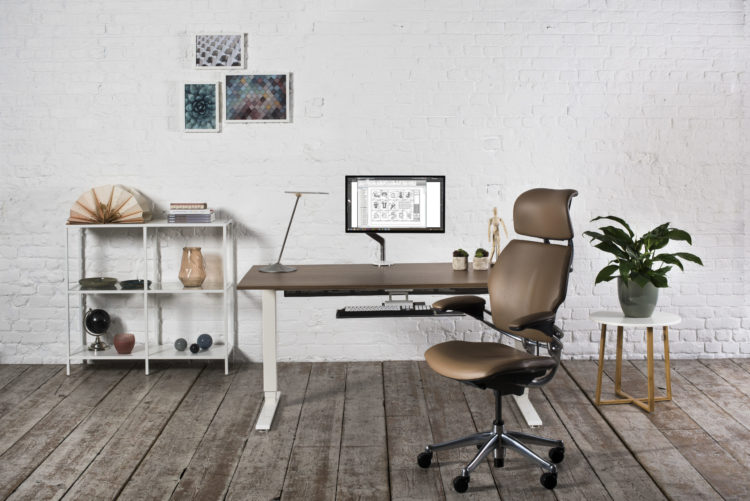
Humanscale also has a full ingredients list – like food – and like Edward Bulmer Paint. This, she believes, should be an industry standard. No-one would buy a loaf of bread without being able to see what was in it – for allergy reasons mainly – but also if you care about sustainability you should be able to see what a piece of furniture contains and where it came from.
The other issue is how do brands work around the fact that the truly sustainable way is to buy well and buy once when they exist to sell products to people.
Elizabeth says she is fully aware that no-one needs more stuff. “We are not in the business of giving people things they don’t need and it’s important that we all think of the future life of that piece of furniture.”
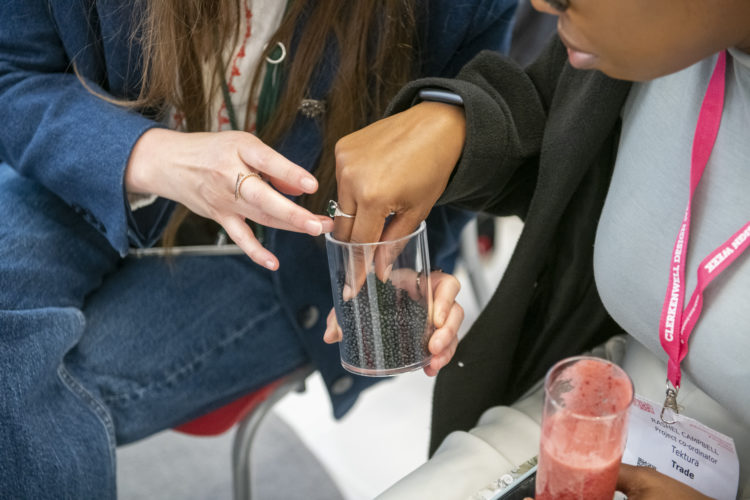
Humanscale has a range of office chairs made from ocean waste. The new Path chair, which is due to be launched in the UK in October, uses 10lbs of ocean plastic and, as Elizabeth says, if you buy one you are doing your bit but if you are kitting out an office and you buy a thousand then you are actively doing good.
The Smart Ocean and Liberty Ocean chairs also use material from plastic fishing nets which are pulled from the sea and transformed into plastic pellets.
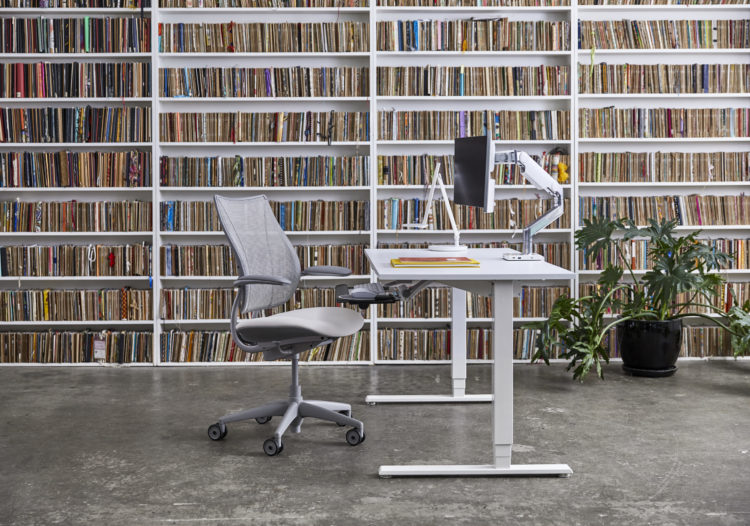
The other issue that often comes up is around the cost of buying sustainably. As Elizabeth points out it’s not cheap to remove waste from the ocean and turn it into a useable product and that accounts for part of the issue. But for those of you who feel priced out of this market there is vintage and there are an increasing number of places you can go to look for discarded and second hand items. You can already buy used and ex-display kitchens and it’s worth keeping an eye out for reconditioned office furniture too. Then there is the old cost per wear formula. If you can possibly afford it now then you might keep it for ever and have it repaired again and again (if needed) so that you don’t have to buy the same piece of furniture again. Or, if your requirements change, you might pass on the one you have to someone else who might be able to use it while you buy new.
We finished our discussion by saying the one small step we have made towards a more sustainable future. Mine is moving to subscription and refills for deodorant, washing powder, dishwasher tablets and washing up liquid. Elizabeth, by contrast – and this just shows you how each person must find their own path – has tried to stop shopping online and walks to the store to buy what she needs in person whenever possible. Roddy makes his own oat milk and Simon has bought an e-bike, while Harry has declared he will wear only vintage clothes and uses a bar of soap to shave.
While this post can’t replace the talk I hope it gives you a flavour of the discussion and, of course, if every person who reads it decides to make one small change that would add up to quite a significant change. And if you need an office chair, or a clever gadget that fits onto your desk so you can charge your phone by just placing it on the desk then you know where to go.






Super Interesting, thanks for sharing. I think a lot about greenwashing lately. In particular in relation to things like EVs. I think that will be good if we can find out all the things that go into a piece of furniture. I like the idea about things being made from recovered ocean waste and the logistics behind that as well. Lots to think about especially as I’m shopping again for furniture.
Whilst most of us who read your blog would agree with you with regard to “green issues” Kate, sometimes the cost incurred can be seriously detrimental to our finances.
For example our granddaughter has chosen to believe the “amazing greeness” publicised by Pangaia and has asked for their Hoody. She, at 13, has learnt to abandon cheap clothing and their far from green practises. A Pangaia Hoody starts at £120!
Say no more.
Give her a second hand one, even better for the environment!
You always have such fantastic suggestions